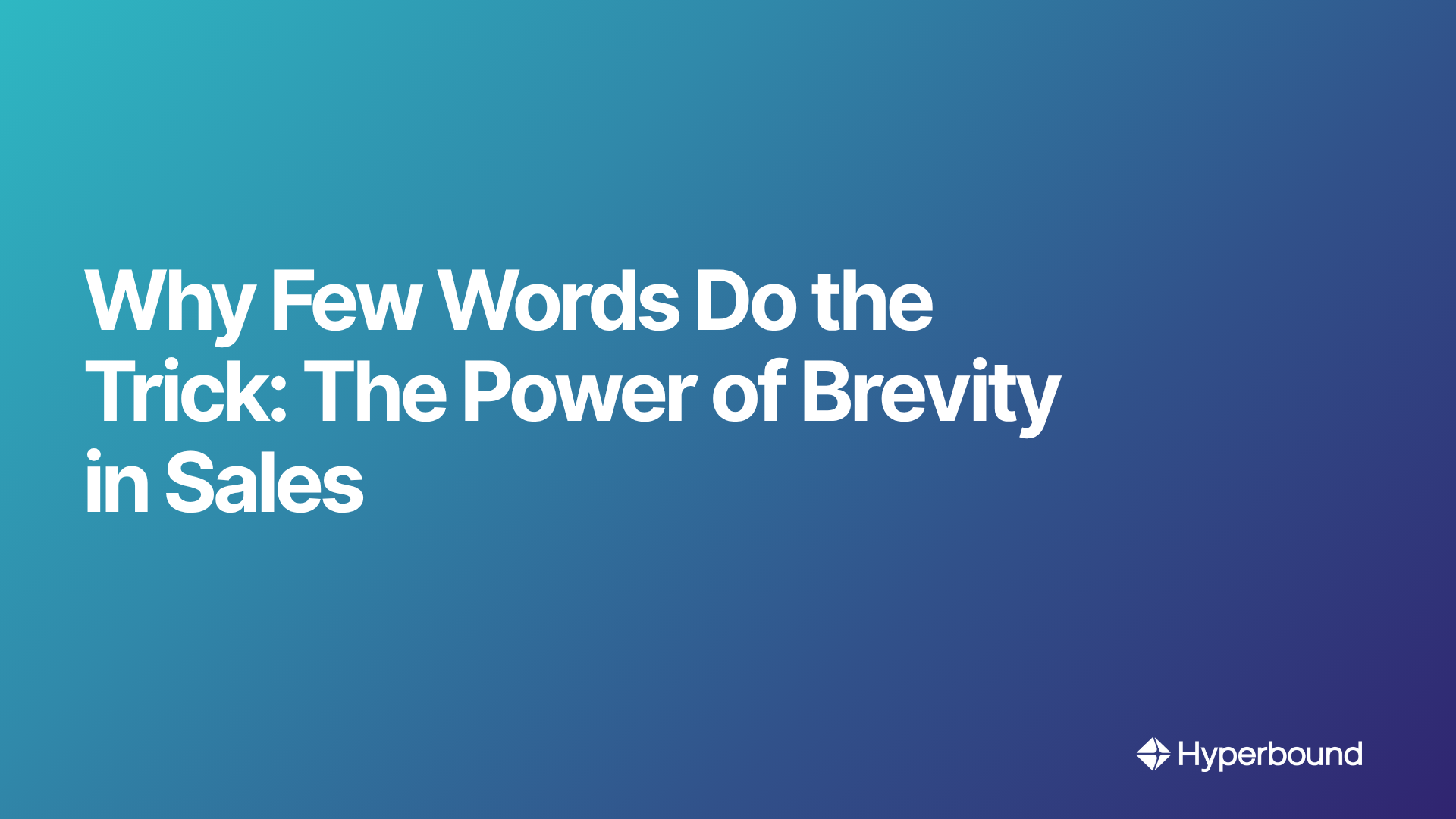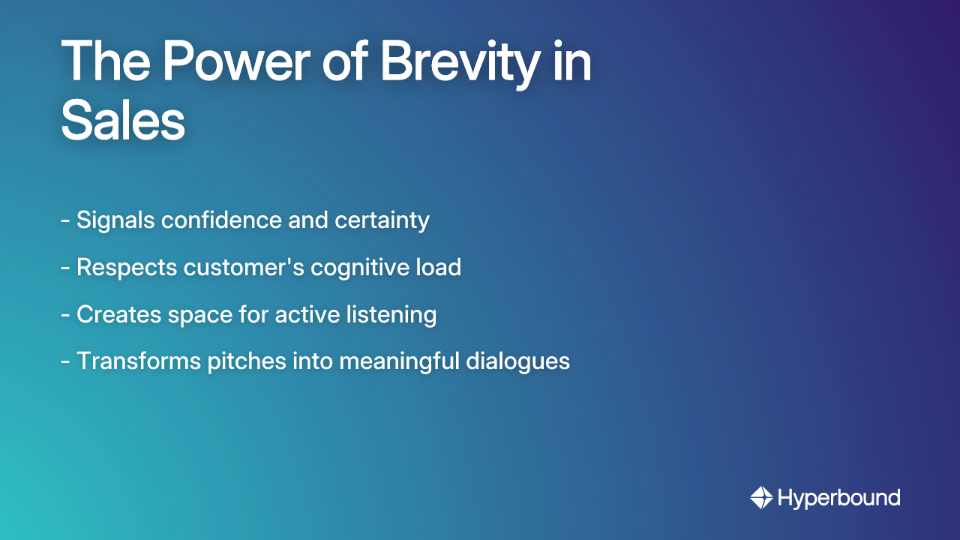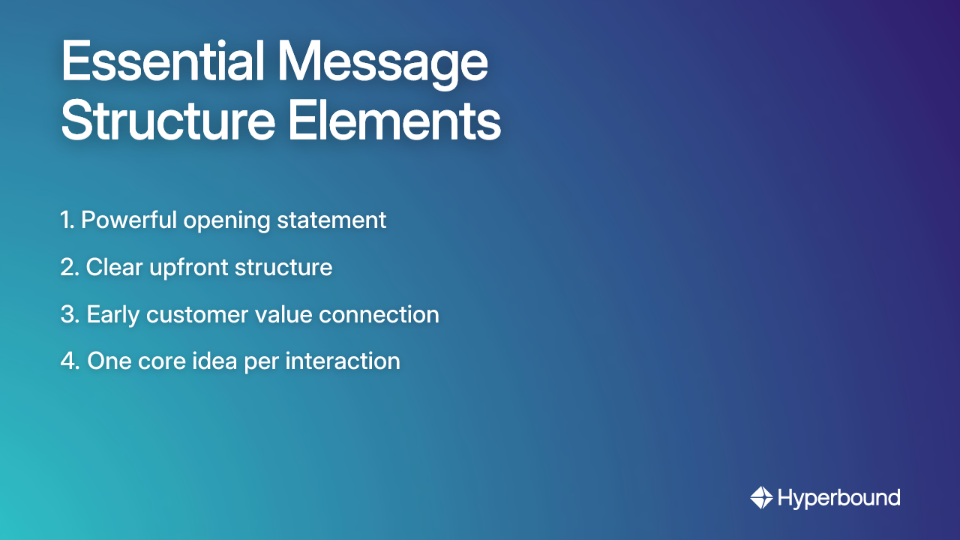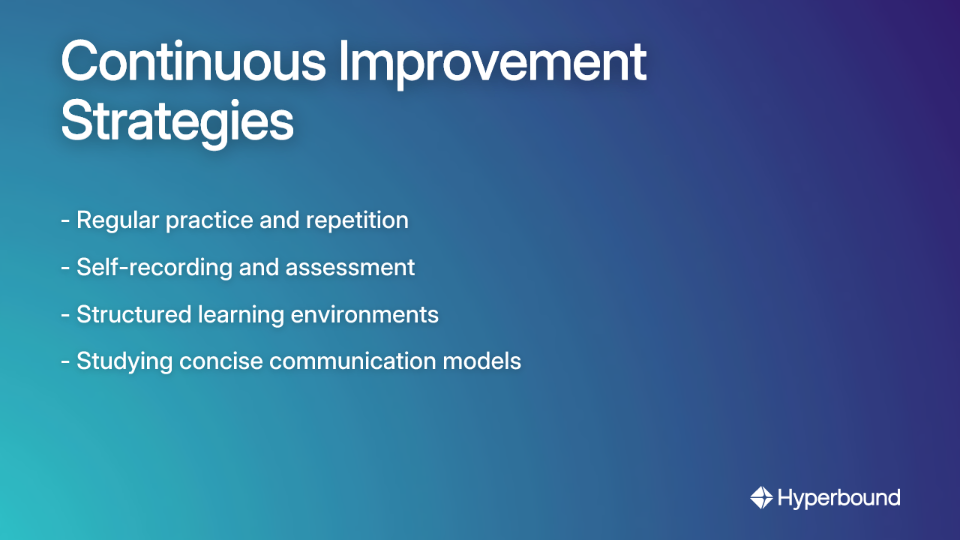
You've just joined a client call. You're excited to share all the features of your product, the technical specifications, the implementation roadmap, and the ROI calculations. Fifteen minutes into your monologue, you notice the client's eyes glazing over. Their attention has wandered, and your chance to make an impact is slipping away.
Sound familiar?
In sales, we often fall into a dangerous trap: believing that more words equal more value. The reality is starkly different. As Mark Twain famously quipped, "I didn't have time to write a short letter, so I wrote a long one instead." This paradox highlights a fundamental truth about communication that many sales professionals overlook: brevity requires effort and skill, but it delivers disproportionate results.
The authors of Smart Brevity put it even more bluntly: "Brevity is confidence. Length is fear." This powerful axiom serves as our guiding principle as we explore why saying less often achieves more in the world of sales.
The Psychology of Brevity: Confidence, Conviction, and Cognitive Load

When you communicate concisely, you signal confidence and certainty in your message. Think about the sales professionals you most respect. Do they ramble, filling every moment with words? Or do they speak with precision, making each sentence count?
A sales engineer in the DevOps space shared his strategy for communicating with non-technical managers: "I'd send an email that basically said, 'Simon, I need you to do X. If you care to understand why, read the following paragraph.'" This approach respects the executive's time while still providing necessary context for those who want it.
Brevity also respects your customer's "cognitive load" – the mental effort required to process information. When you overload prospects with verbose explanations and unnecessary details, you force them to work harder to extract value from your message. This mental fatigue can lead to disengagement or, worse, rejection of your proposal entirely.
Perhaps most importantly, concise communication creates space for active listening. The humility to stand in silence after asking a hard-hitting question allows your prospect to think deeply and respond thoughtfully. One sales professional noted, "Instead of filling every gap with words, slow down, use active listening, and deliver a clear, concise, singular question." This approach transforms one-sided pitches into meaningful dialogues that reveal genuine customer needs.
Cutting Through the "Sea of Sameness": Brevity as a Competitive Advantage
In today's crowded marketplace, most B2B solutions fall into what Cerebral Selling calls the "Sea of Sameness" – they offer similar value propositions: "reduce costs," "improve efficiency," "grow revenue." When everyone sounds the same, buyers tune out.
This is where the Attention-Value Matrix becomes crucial. This framework shows that as the perceived value of a product increases, the attention required from the customer decreases. High-value offerings naturally command attention, while low-value ones must fight for it.
For most sales professionals, especially those in competitive industries like technology or DevOps, breaking through this noise is essential. A concise, highly targeted message acts as your competitive differentiator – it cuts through the clutter and signals that you won't waste the buyer's time.
Statistics back this up: the top 20% of salespeople make 80% of all sales, and their ability to communicate succinctly and articulate a Unique Value Proposition is a key differentiator. By mastering brevity, you immediately position yourself in this elite category.
The Practical Toolkit for Powerful Brevity: A Step-by-Step Guide
Part 1: Structuring Your Message (The 'What')

Craft a Powerful Lede: Your first sentence must capture attention and deliver your core point.
- Weak opening: "In today's fast-paced, competitive landscape, many organizations find it challenging to optimize their deployment pipelines..."
- Strong opening: "Our solution cuts deployment time by 73% while eliminating critical security vulnerabilities."
Signal the Structure Upfront: Tell them what you're going to tell them. This structured thinking approach reduces cognitive load and helps your audience follow along. For example: "Today, I want to cover three key benefits of our platform: speed, security, and scalability."
Connect to the Customer, Early: Immediately answer the "What's in it for me?" question. Don't bury the lead with company history or technical specifications. Start with customer outcomes.
Stick to One Core Idea: Focus each message or client call on a single, clear point. As one sales engineer put it, "I'd rather have three short conversations with clear outcomes than one long, confusing discussion."
Part 2: Refining Your Delivery (The 'How')
Eliminate Filler Words: Practice pausing instead of saying "umm," "uh," or "like." One sales professional noted, "Avoiding the word 'umm' has really helped me develop a more confident sound in my pitch and general dialogue."
Use Simple, Direct Language: Avoid jargon when speaking to non-technical audiences. This is especially important for sales engineers and technical specialists who must translate complex concepts into business value.
Leverage Analogies: Complex ideas become accessible through well-chosen analogies. As one professional shared, "Analogies are very useful for explaining new concepts to people." They create mental shortcuts that make your communication more efficient and memorable.
Part 3: The Art of the Question
The most concise way to get to the point is often to let the customer tell you what it is. This requires mastering the art of questioning.
Shift from Pitching to Probing: Instead of dominating the conversation with features and benefits, use targeted questions to uncover needs efficiently.
Use SPIN Selling: This structured questioning technique progresses through four stages:
- Situation: "How are you currently managing your deployment process?"
- Problem: "What challenges are you facing with your current approach?"
- Implication: "How is this affecting your team's productivity and your time-to-market?"
- Need-Payoff: "If you could reduce deployment time by 50%, what impact would that have on your business?"
Ask Better Questions: One sales professional recommended the book "Conversations Worth Having," noting, "If you can ask the right questions, you can get the customer to answer their own questions, thus solving their own problems." This approach transforms you from a talker into a trusted advisor.

Becoming a Master of Brevity: Your Continuous Improvement Loop

Mastering brevity isn't a one-time achievement—it's an ongoing process of refinement. Here are practical steps to continue improving:
Embrace "Practice, Practice, Practice": As one professional wisely stated, this is the only way to improve your communication skills.
Leverage Technology for a Scalable Feedback Loop:While self-recording is a great start, modern tools can accelerate this process exponentially.
- Use AI-Powered Roleplays: Practice your pitch, objection handling, and questioning techniques in a safe, repeatable environment. Platforms like Hyperbound's AI Sales Roleplays allow you to refine your message against realistic AI buyer personas, providing instant feedback without waiting for a colleague or manager.
- Automate Call Analysis: Manually reviewing calls is time-consuming. AI tools can automatically analyze both practice roleplays and real customer calls. Hyperbound's AI Real Call Scoring, for instance, can score your performance against a custom rubric, highlighting filler words, measuring talk-to-listen ratios, and ensuring you're delivering a concise, on-brand message.
Find a Structured Learning Environment:
- Join Toastmasters: For foundational public speaking skills, Toastmasters remains a top recommendation for learning to speak in an orderly way. "Toastmasters helped me tremendously. Find a club and join it."
Study the Masters of Conciseness:
- Learn from Executive Summaries: Studying executive summaries is a great way to learn how to distill major points and create action plans. This directly addresses the pain of colleagues who "don't get to the point."
Conclusion: Saying Less, Winning More
Brevity isn't about saying little; it's about making every word work. It conveys confidence, respects the customer's time, and cuts through competitive noise. By structuring your message clearly, refining your delivery, and mastering the art of questioning, you transform from just another salesperson into a trusted advisor who commands respect and attention.
Remember: in a world where everyone is talking, the one who uses fewer, more impactful words stands out. As you strengthen your communication skills through self-assessment and structured practice, you'll find that brevity becomes your most powerful sales tool.
Frequently Asked Questions
Why is brevity important in sales?
Brevity in sales is crucial because it signals confidence, respects the customer's limited attention, and helps your message stand out. When you speak concisely, you demonstrate a clear understanding of your value proposition and respect for the prospect's time. This approach reduces their "cognitive load," making it easier for them to grasp your key points and preventing them from tuning out due to information overload.
How can I be more concise in my sales communication?
You can become more concise by focusing on three key areas: message structure, delivery, and questioning. Start by crafting a powerful opening sentence (a "lede") that gets straight to the point. Structure your conversation around a single core idea, eliminate filler words like "um" and "uh," and use simple, direct language. Finally, use targeted questions to let the customer guide the conversation to what's most important to them.
What is the "Sea of Sameness" and how does brevity help overcome it?
The "Sea of Sameness" describes how most B2B solutions sound alike, often using generic value propositions like "reduce costs" or "improve efficiency." Brevity is a powerful tool to overcome this. It forces you to distill your message into a unique and compelling point that cuts through the noise. A short, sharp, and relevant message immediately differentiates you from competitors who rely on long, generic pitches.
How can I practice being more concise without risking real deals?
The safest and most effective way to practice brevity is in a controlled environment. Utilize AI-powered sales role-playing tools, like those from Hyperbound, to rehearse your pitch and get instant feedback. You can also join a public speaking club like Toastmasters to work on structured communication, or simply record your own mock calls and analyze them for areas of improvement, such as talk-to-listen ratio and use of filler words.
What are some effective questioning techniques to keep conversations concise?
Effective questioning is key to a concise conversation because it puts the focus on the customer's needs. The SPIN Selling framework is an excellent technique for this. By asking structured questions about the customer's Situation, Problems, Implications, and Need-Payoff, you efficiently guide the conversation toward the core issues. This transforms your role from a pitcher to a problem-solver, allowing you to get to the point much faster.
How do I balance being brief with building rapport with a client?
Balancing brevity and rapport comes down to making your concise communication respectful, not abrupt. Brevity is not about being rude; it's about making every word count. In fact, true brevity creates more space for active listening, which is one of the most powerful ways to build rapport. By asking thoughtful questions and genuinely listening to the answers, you demonstrate far more respect for the client than by filling every second with a monologue.

Stop talking. Start selling.
Book a demo with Hyperbound
.png)













